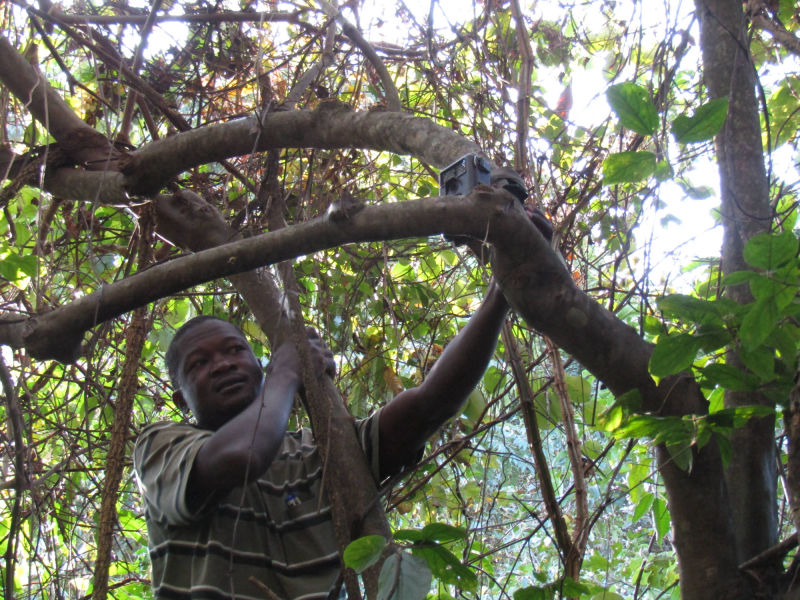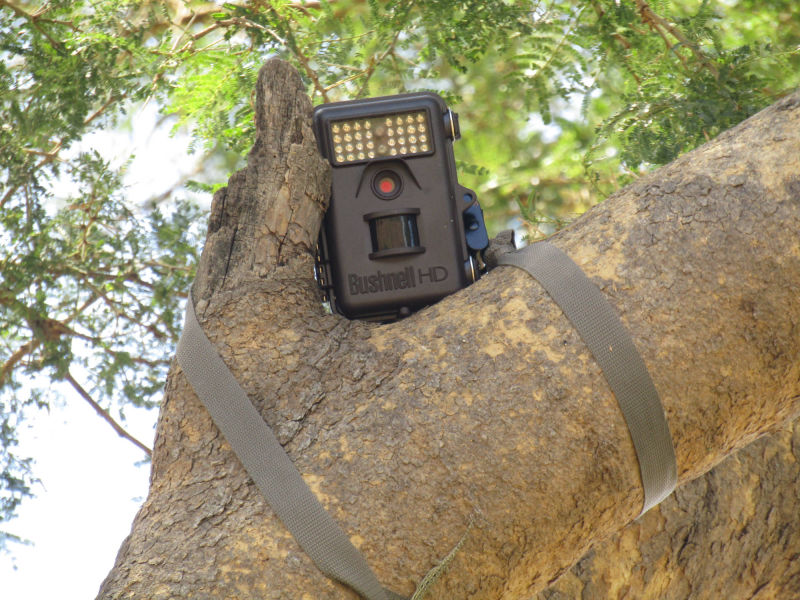 Camera Trap Setting
Camera Trap Setting Camera Trap
Camera TrapThe integration of environment values to society needs is impeded by the large gap between science, policy and implementation of management options. This is usually brought about by weaknesses in decision makers using the results of science to inform the societal needs and its relevance. Evidence based research is the use of prior research results in a systematic and transparent way to inform and answer questions that matter in a valid, efficient and accessible manner. Integration of environmental studies provides relevance of development projects, describes the efficiency of and sensitivity of the projects to the environment.
Ecological Trends Alliance promotes the application of research in informing the implementation of development porjects, defining conservation priorities and implementing conservation of sensitive landscapes. This is done through:
1. Promoting the understanding and use of the mitigation hierarchy in development projects
2. Coducting biodiversity studies that inform development
3. Valuing natural resources in economic terms and fronting options that best inform development
1. EBR exhibits clarity, builds authoritative content, time-tested step-by-step approaches and employs the abundant use of research examples in addressing challenges.
2. EBR ensures that the results of a given study are placed in context by having them incorporated in a systematic review of similar earlier studies.
3. EBR is key in the development and evaluation of intervention programmes and practices. It is key in the refining of programmes and practices and in their designation and cataloguing.
4. EBR is a very good baseline for planning any new research. A systematic review of existing evidence is key prior to undertaking any new study.
5. EBR is clinical and precise in providing information that is relevant. It avoids unnecessary or poorly designed studies since no new research can be engaged into unless the question(s) it proposes to address cannot be answered satisfactorily with existing evidence.
6. EBR reduces waste in research and hence funding by promoting no new studies without prior systematic review of existing evidence and efficient production, updating and dissemination of systematic reviews.
Some of the EBRs done this far include:
1. Collaring of lions in the Murchison Falls National Park and Kidepo National park landscapes.
2. Human Wildlife Conflict around the Murchison Falls Conservation Area.
3. Populations and Diversities of Butterflies, Herpetiles, Fish, Birds and Mammals between Karuma and Olwiyo for power transmission lines.
4. Populations and Diversities of Butterflies, Herpetiles, Fish, Birds and Mammals in selected areas North and South of the Albert Nile for critical oil roads.
5. Populations and Diversities of Butterflies, Herpetiles, Fish, Birds and Mammals around River Nyamwamba for the Upper Nyamwamba Hydro-power project.
6. Populations and Diversities of Butterflies, Herpetiles, Fish, Birds and Mammals around Bulucheke and Bushiyi for the proposed 5.7MW small Hydro-power project on on River Manafa.
7. Populations and Diversities of Butterflies, Herpetiles, Fish, Birds and Mammals along a 50km stretch for the construction of the Karugutu-Ntoroko road at Semliki game reserve.
8. Populations and Diversities of Butterflies, Herpetiles, Fish, Birds and Mammals around Bunyamwera for the construction of the Ndugutu Small Hydro-Power project.